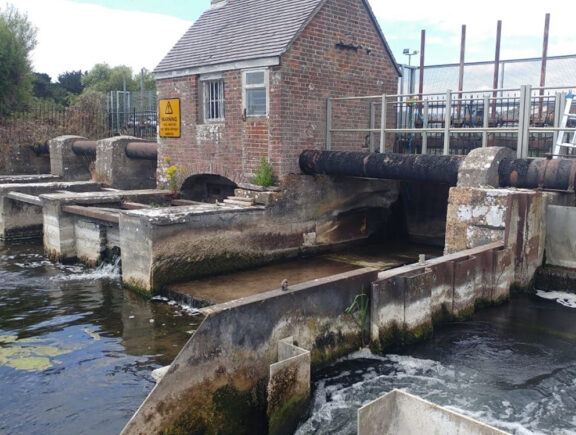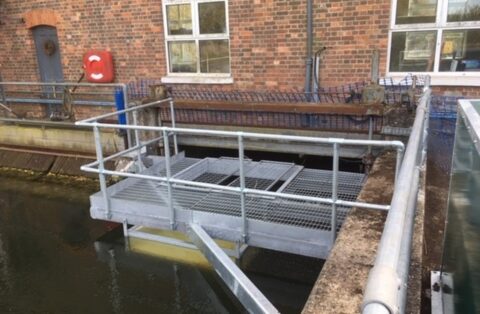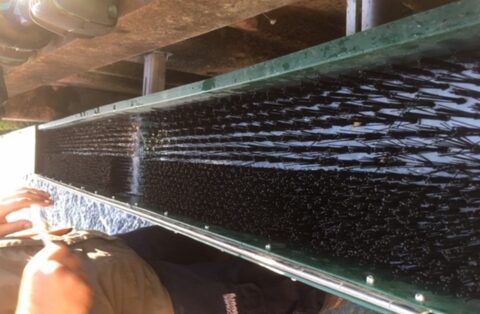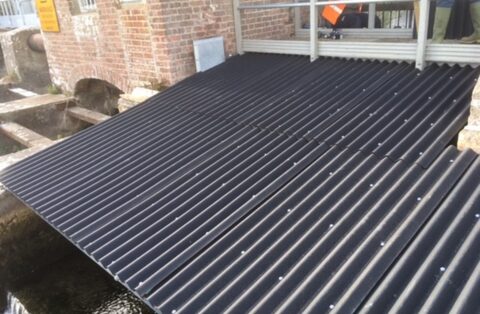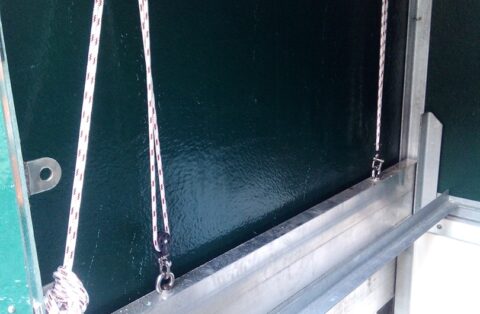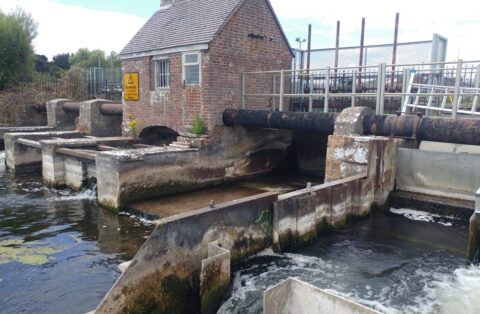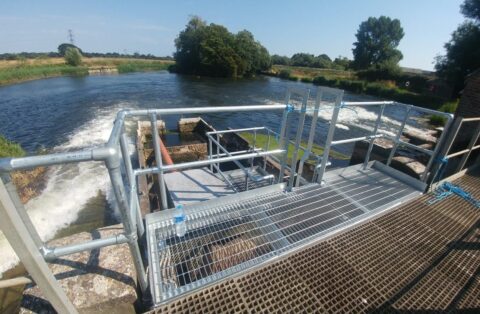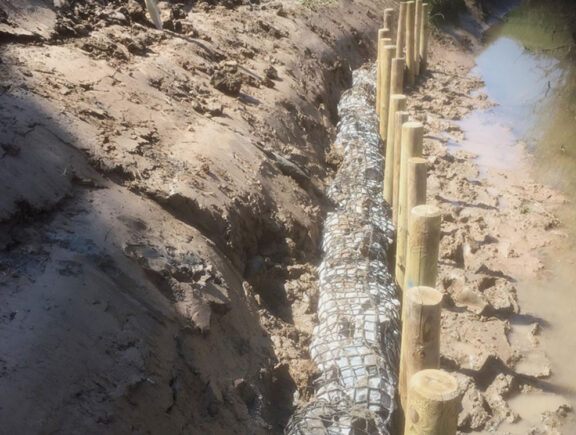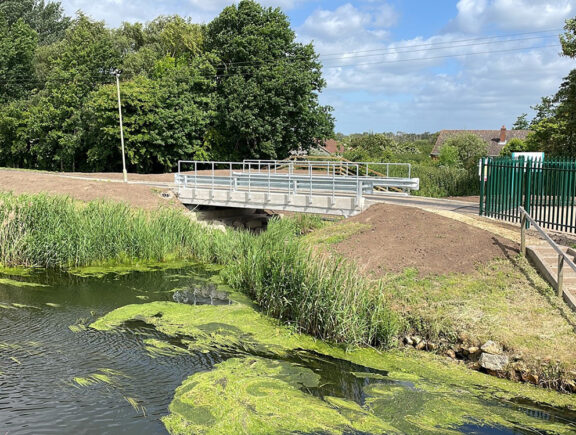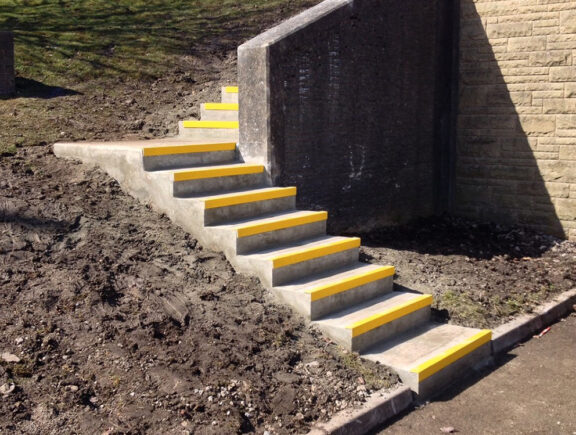Project in numbers
95% decline in the UK’s eel population since 1980 making the protection of this endangered species vital
28% of migratory fish species in Europe are threatened or near-threatened
The need
A specialised eel pass was needed to allow eels and fish, to navigate the weir, thus improving migration, protecting the species and supporting biodiversity within our waterways. The chamber at the Turbine House also accommodates specialist telemetry equipment and a camera which allows specific species to be identified once overall numbers have been recorded via sensors. The chamber and panels housing the sensors had deteriorated due to age requiring replacement. Safer access was also required for operatives and maintenance teams to routinely access the specialist equipment.
The solution
We replaced the old fish counter chamber with an in-house fabricated fiberglass one, which was lifted into place under the Turbine House using a crane. This purpose-built chamber featured a gate to protect operatives from the drop into the chamber when accessing to survey the equipment and clean the electrodes.
To provide safe access to the new counter, we improved the surrounding access infrastructure to align it with modern safety legislation. Designing this was challenging because the high water level and positioning of the trash screen meant it could not have support legs. Our engineers therefore designed a counter-levered gantry to be suspended on the two existing walls. The design was calculated to ensure it was strong enough to support the weight of multiple operatives. The gantry was fabricated in-house and was lifted into place with a crane.
The Great Weir has a series of sluice gates which are individually controlled to maintain constant upstream water levels for abstraction. The Glass Reinforced Plastic (GRP) panels lining individual channels that house the sensors had become degraded over time. Therefore, after isolating the channels using the existing sluice gates, we re-lined them with new GRP side and floor panels that had been fabricated to contain new electrodes.
Our engineers also fabricated and installed steel dividing structures where existing ones had become warped and damaged, re-designed to provide greater resilience against heavy flows. These were then covered in the new GRP-electrode sheets. These structures, present between each sluice gate, channel water flow and provides surface with which to accurately capture fish numbers when all gates are open. A protective sunlight cover was installed to reduce the algae growing on or near the electrodes, as this can impact readings.
To cater for eels, which are unable to swim and jump through the sluice gates, we designed, fabricated and installed two brush-style gravity fed eel ramps to enable them to move upstream. A smaller pass, designed to be removable, allows an additional route for elver during the breeding season, but detaches to allow all hatches to open at other times. Finally, the team updated the access at the Great Weir, including a walkway and ladder to enable operatives to safely clean the electrodes and manage the eel pass.
The benefits
- In-house fabrication of several elements including the access gantry, fish counter housing and sluice gates enabled us to provide a purpose-built, made-to-measure solution for every element of the project
- Upgraded fish counter equipment and access ensures accurate surveying and safety for operatives
- Adding a specialised pass for eels and elver in addition to fish will significantly aid biodiversity and improve the natural habitat, with only 1% of UK rivers free from barriers, eel passes are essential to help ameliorate the recent decline in their numbers
